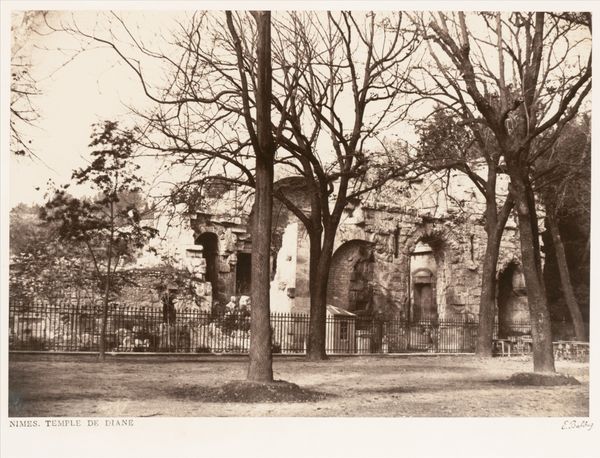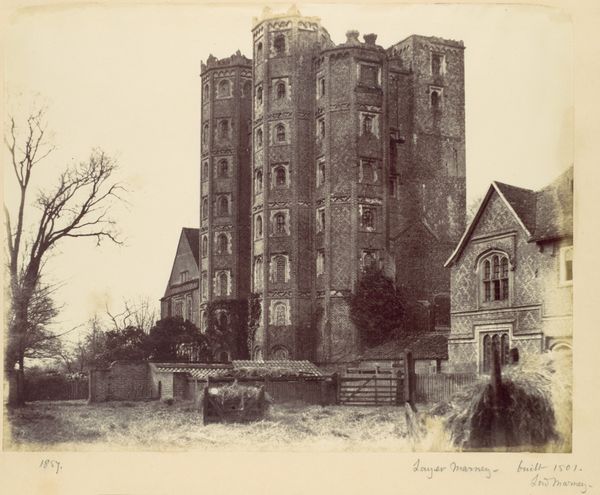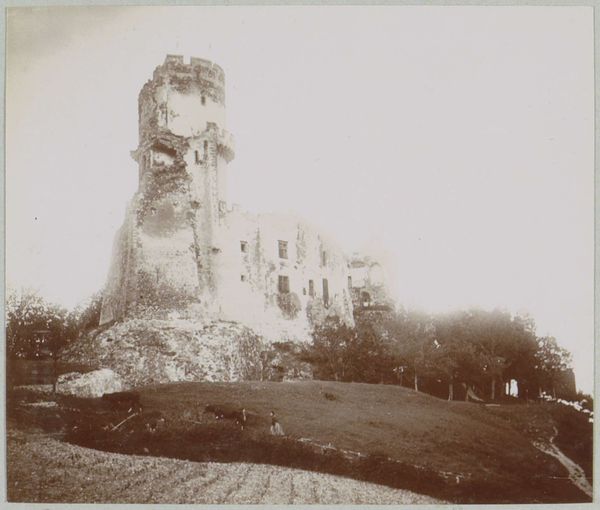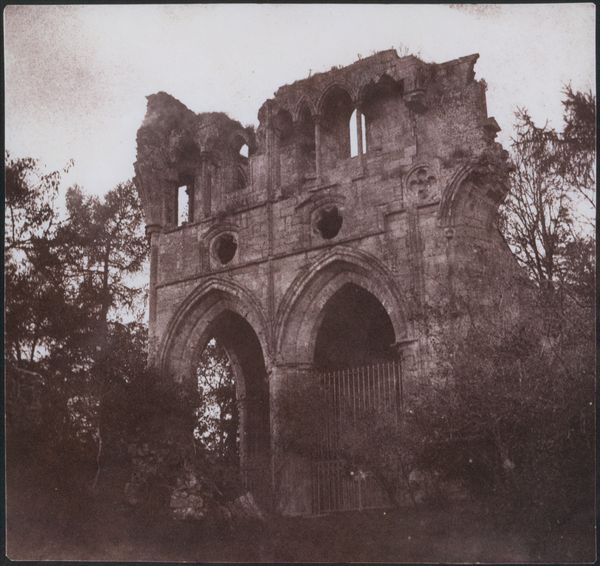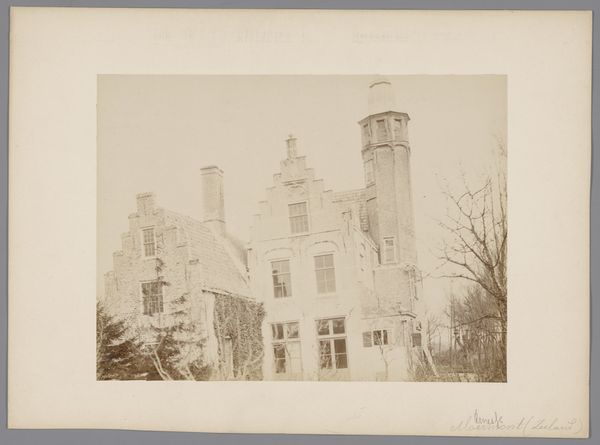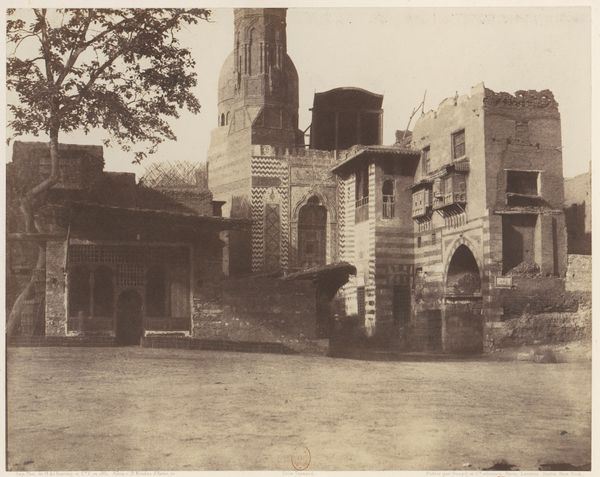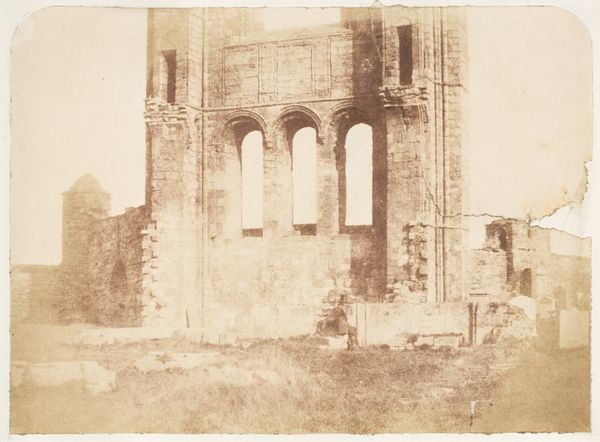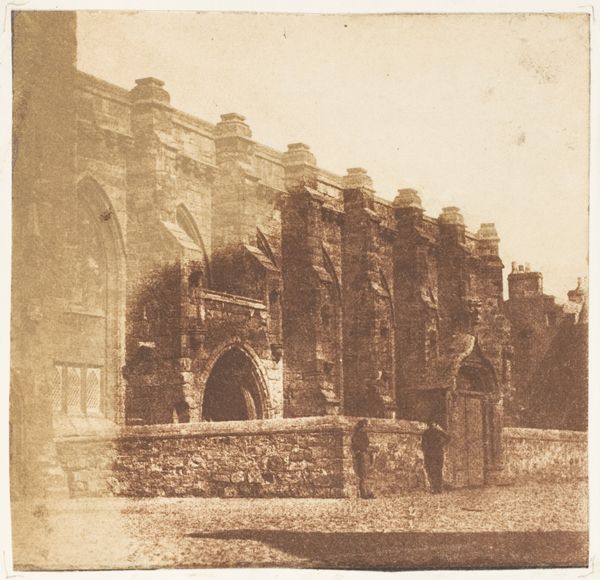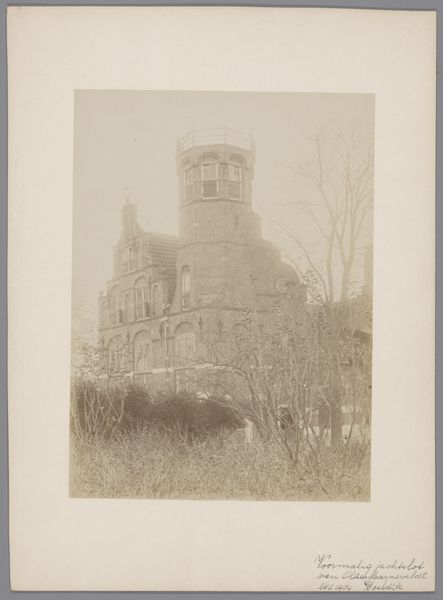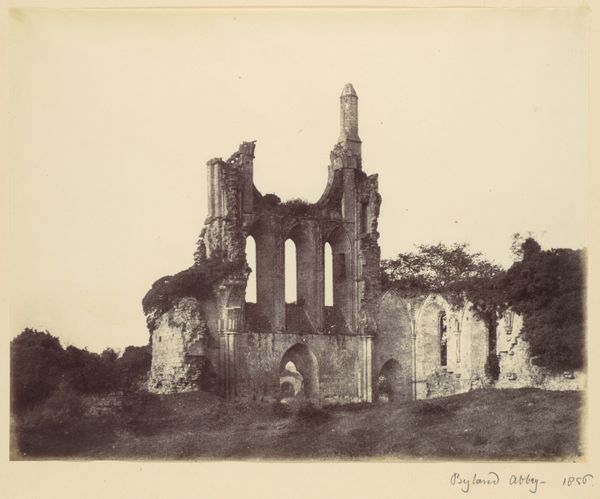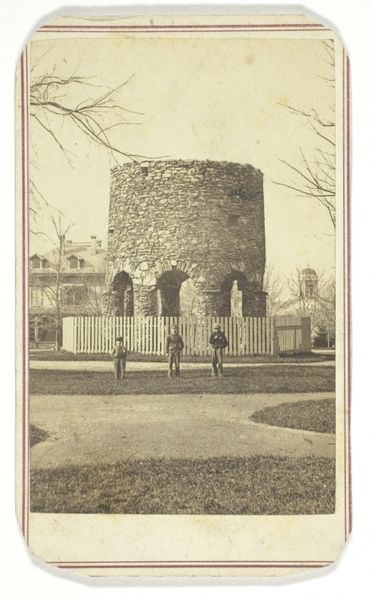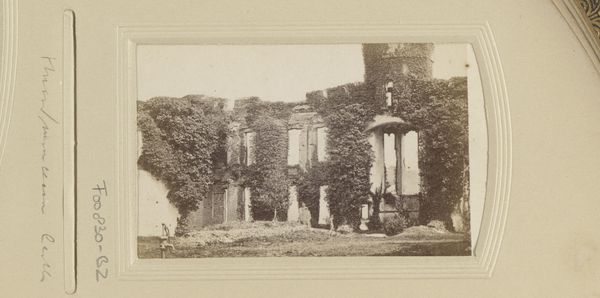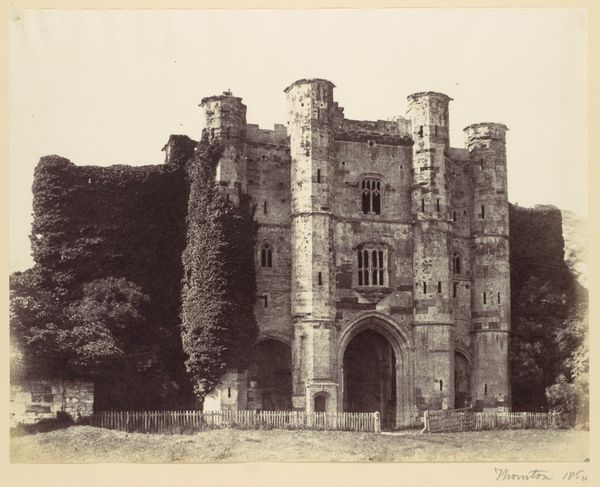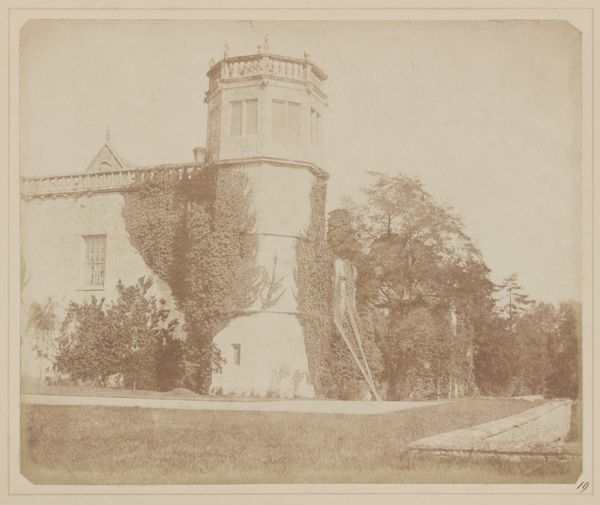
Dimensions: 21.5 x 27.4 cm. (8 7/16 x 10 13/16 in.)
Copyright: Public Domain
Curator: What strikes me first about this image, before even any details, is the palpable sense of ruin and decay; there is such haunting grandeur even in what’s been lost. Editor: Indeed, that sentiment perfectly encapsulates this work! We're looking at Alfred Capel Cure's photograph, "Nether Hall," taken in 1857 using the albumen print process. It’s held here at The Met. Cure captured the remains of this formerly stately manor house in Essex. Curator: That albumen print lends a melancholic warmth to the stone. You almost feel the ghosts of those who once walked those halls—such stark contrasts between past glory and current desolation. I can only imagine what the symbol of such structure meant back then. Editor: The image presents us with questions of social memory and cultural shifts. Cure created it during the height of the Romantic period, when ruins held particular significance. What could this tell us? Nether Hall was not just crumbling stone, but evidence of societal change. Perhaps decline in the power of nobility. Curator: The towers stand as potent symbols, reaching but broken. The one of the right showing how destruction has touched it. The gate sits ajar; no more defenses necessary now. But tell me more of that architectural vocabulary. Editor: The architecture of Nether Hall speaks of a time when prominent families could quite literally raise high stone walls as expressions of dominance. And the fall... it is all intertwined with larger narratives about industrialization, the shift of wealth, and land ownership. The building once displayed power; the photograph displays something of power, yes, but also its decline. Curator: It feels imbued with this idea, the transience of existence... What once held so much meaning devolves into empty husks. What did it mean to view such stark visuals then versus now? And that is a universal sign. Editor: Precisely! Photography served as a vital record—and often, a political statement. Now, our gaze, informed by completely different socio-political context, transforms it into another layer, perhaps with an eye to environmentalist messages. The dialogue continues... Curator: It's humbling to think of these layers building atop one another over time. Even an image can turn out a time machine, evoking past lives as much as its subjects! Editor: A reminder of the cyclical nature of history! Thank you.
Comments
No comments
Be the first to comment and join the conversation on the ultimate creative platform.
